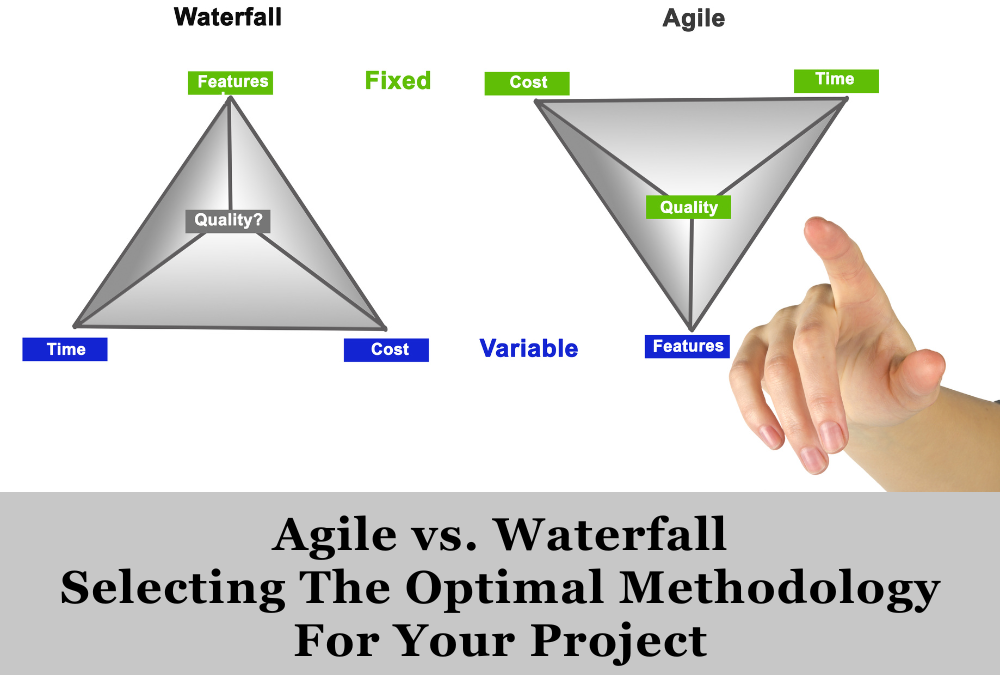In the world of project management, there are two primary methodologies that dominate discussions: Agile and Waterfall. Each has its own set of principles, processes, and advantages, making the choice between the two a crucial decision for any project. But how do you know which methodology is the right fit for your specific project? In this blog post, we’ll explore the differences between Agile and Waterfall methodologies, their pros and cons, and factors to consider when choosing the right one for your project.
In the debate between Agile and Waterfall methodologies, there is no one-size-fits-all answer. Each methodology has its own strengths and weaknesses, and the right choice depends on the specific characteristics and requirements of your project. By carefully considering factors such as project requirements, size, stakeholder involvement, organizational culture, and constraints, you can make an informed decision that sets your project up for success. Whether you opt for the structured approach of Waterfall or the adaptive nature of Agile, the key is to choose the methodology that best aligns with your project’s goals and objectives.
Understanding Agile and Waterfall Methodologies
Waterfall Methodology:
The Waterfall methodology follows a linear and sequential approach to project management. It is characterized by distinct phases that flow downwards, much like a waterfall. Each phase relies on the completion of the previous one, and changes are difficult to implement once a phase is completed.Agile Methodology:
Agile methodology, conversely, embodies an iterative and incremental approach to project management, placing emphasis on flexibility, collaboration, and continuous improvement. Projects following Agile principles are broken down into small iterations or sprints, each aimed at delivering a potentially shippable product increment. Stakeholder feedback is sought regularly, facilitating adjustments and enhancements throughout the project lifecycle.Pros and Cons of Agile and Waterfall:
Waterfall:
Pros:- Clear and well-defined project phases.
- Easy to understand and implement for small, straightforward projects.
- Suitable for projects with stable requirements and little to no expected changes.
- Limited adaptability to incorporate changes during development.
- High risk of project failure if requirements are misunderstood or change.
- Limited stakeholder involvement until later stages of development.
- High flexibility to accommodate changes and adapt to evolving requirements.
- Regular feedback loops ensure that the project stays aligned with stakeholder needs.
- Promotes collaboration and teamwork among cross-functional teams.
- May be challenging to implement in organizations unfamiliar with Agile practices.
- Can be perceived as lacking structure by traditional project management standards.
Choosing the Right Methodology
When deciding between Agile and Waterfall for your project, several factors should be taken into consideration:- Project Size and Complexity: When assessing project size and complexity, it’s essential to match the methodology accordingly. Agile thrives in environments with sizable, intricate projects where requirements might evolve over time. Conversely, Waterfall is better suited for smaller, less intricate projects with clearly defined requirements.
- Stakeholder Involvement: Evaluate the level of stakeholder involvement and their willingness to participate throughout the project. Agile requires active engagement from stakeholders, while Waterfall allows for less frequent involvement until later stages.
- Organizational Culture: Assess your organization’s culture and readiness for Agile practices. If your organization values adaptability, collaboration, and continuous improvement, Agile may align better with its culture. However, if there is resistance to change or a preference for traditional project management approaches, Waterfall may be more acceptable.
In the debate between Agile and Waterfall methodologies, there is no one-size-fits-all answer. Each methodology has its own strengths and weaknesses, and the right choice depends on the specific characteristics and requirements of your project. By carefully considering factors such as project requirements, size, stakeholder involvement, organizational culture, and constraints, you can make an informed decision that sets your project up for success. Whether you opt for the structured approach of Waterfall or the adaptive nature of Agile, the key is to choose the methodology that best aligns with your project’s goals and objectives.

